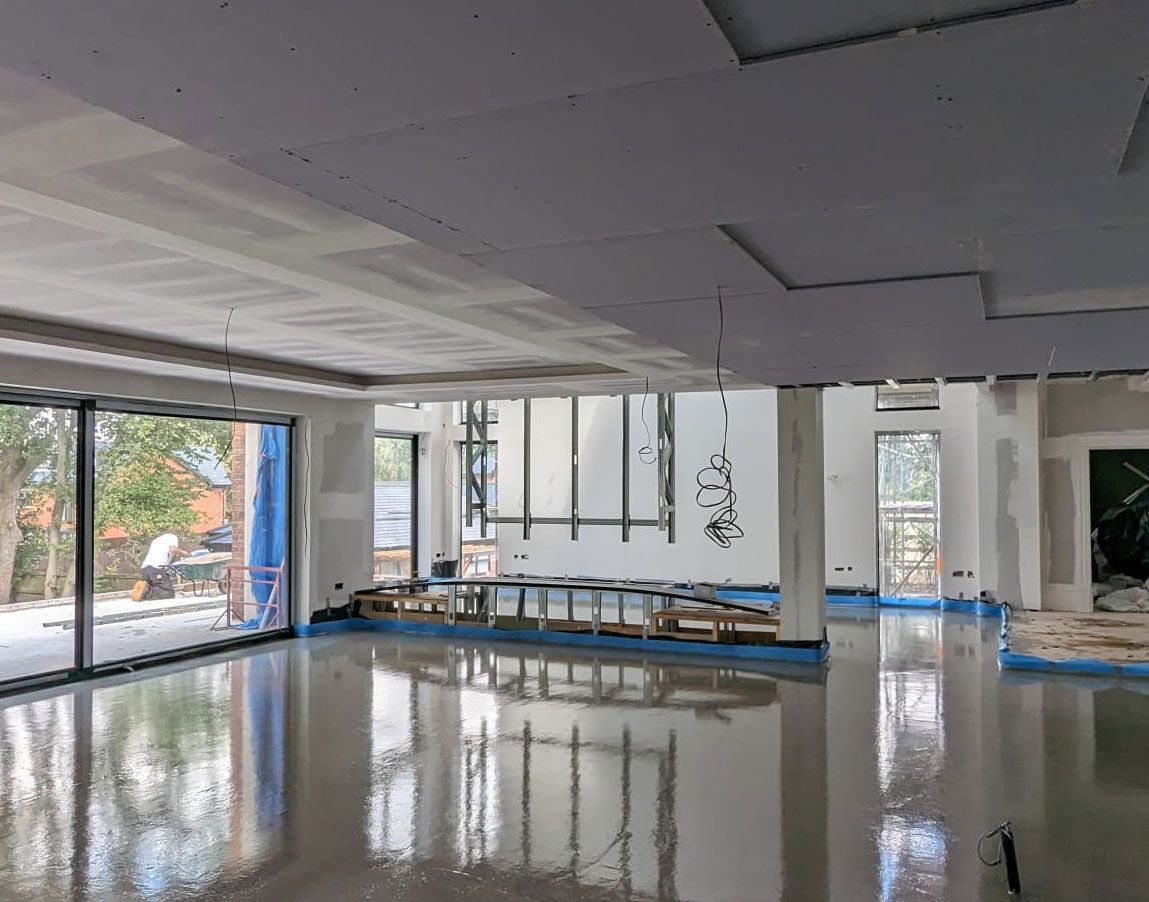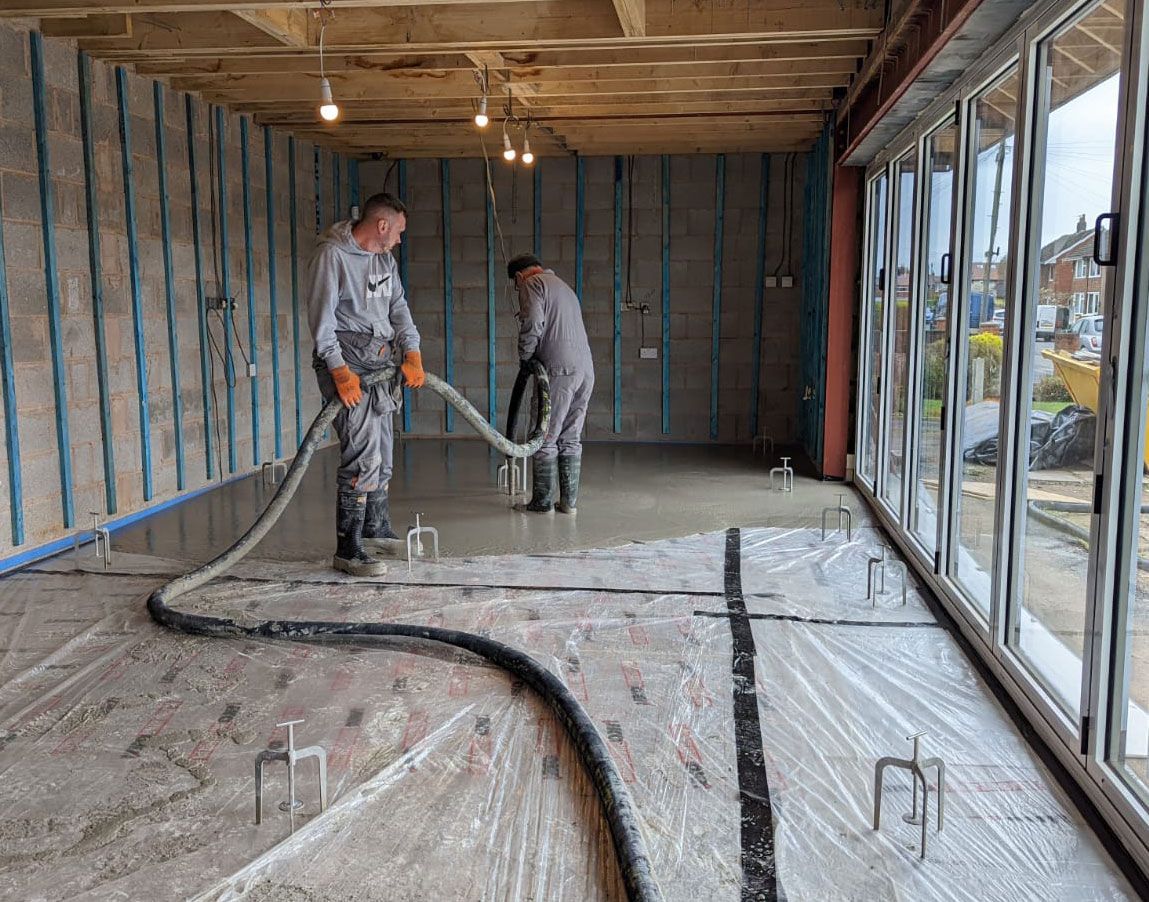Floor screed
Floor screed is used on construction projects to create smooth, level floors, ready for the application of a final floor finish such as tiles, carpet, laminate and vinyl.
There are several types of floor screed available for contractors to use. Clockwork Screed supplies cementitious liquid floor screed which is self-levelling and therefore requires less time and labour to apply.
Let’s take a look at the different types of floor screed.
Get a free quote and see the difference!
Types of floor screed
- Liquid floor screed is self-compacting and therefore ideal for flooring with or without underfloor heating.
Clockwork Screed’s liquid floor screed is very strong and can be laid quickly and as thinly as 25mm.
- Bonded screed uses a bonding agent to fix to the substrate (underlying layer). Typical applications are driveways and car parks.
- Unbonded screed is separated from the substrate by a dampproof membrane that is on top of concrete to reduce shrinkage, settlement and damp. It is often used for cast-in pipes in underfloor heating systems.
- Floating screed is installed on top of insulation to increase energy efficiency, mainly for buildings with underfloor heating or where there is a need for acoustic or thermal insulation.
The process of screeding a floor
At Clockwork Screed, the process of screeding a floor starts with the delivery of our cementitious liquid floor screed, directly to the space where it is needed, using our innovative mobile screed plants.
The floor screed is pumped directly onto the floor, after which it self-compacts and self-levels. This is a far quicker and more cost-effective process than having one contractor delivering the screed to site and another pumping and levelling it.
When screeding a floor, Clockwork Screed can cover 1000m² a day. Up to 100m² of our liquid floor screed can be laid without joints if there is an underfloor heating system fitted. If there is no underfloor heating system, we can lay up to 150m² without joints.
How long does floor screed take to dry out?
How long a floor screed takes to dry out depends on the type of floor screed applied.
Clockwork Screed’s cementitious liquid floor screed is very quick to dry out, usually around 24-48 hours before it can withstand footfall.
Traditional sand and cement screeds take around 1mm a day drying time for floors that are up to 50mm thick. Anything over 50mm takes longer, so for a 75mm screed layer a typical drying time would be 75-100 days.
How much does screeding cost?
How much floor screed costs depends on several factors:
- Screed type
- Screed depth which directly determines the volume required
- Floor size because obviously the bigger the floor, the higher the cost
On average, the unit cost of liquid floor screed is higher than sand and cement screeds, however with Clockwork Screed this is offset by the lower labour costs and high, long term performance.

FAQs
How durable is Clockwork Screed cementitious liquid floor screed?
Our floor screed is highly durable with an excellent shrinkage rate of under 0.05%. Because it self-compacts there is no risk of bubbles or voids around pipework.
How soon can a floor finish be applied after the liquid floor screed has been laid?
With Clockwork Screed liquid floor screed, the floor can be applied as soon as moisture levels reach 2.5%CM.
How do I get a quote?
Contact the Clockwork Screed team for a liquid floor screed quote or for any additional information.








